9 Best Herbal Tinctures For Lower Back Pain
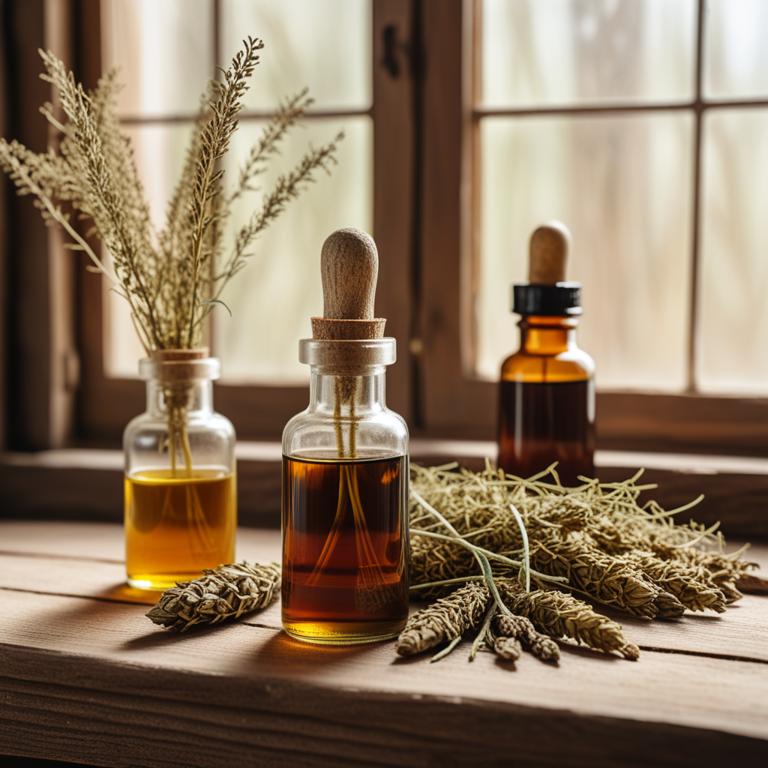
Herbal tinctures for lower back pain are liquid extracts made from various herbs, plants, and botanicals that are used to relieve and alleviate pain in the lower back region.
The benefits of using herbal tinctures to treat lower back pain include their natural composition, ease of use, and potential for fewer side effects compared to pharmaceutical medications.
Some examples of herbal tinctures that can be used to treat lower back pain include Willow bark tincture, which contains salicin, a compound similar to aspirin, to reduce inflammation and relieve pain, Ginger tincture, which has anti-inflammatory properties to reduce muscle spasms and pain, Turmeric tincture, which contains curcumin to reduce inflammation and promote healing, St. John's Wort tincture, which has analgesic and anti-inflammatory properties to relieve pain and promote relaxation, and Valerian root tincture, which promotes relaxation and reduces muscle tension to alleviate lower back pain.
By using these herbal tinctures, individuals can find natural and effective relief from lower back pain without the risks associated with pharmaceutical medications.
According to "Spine", tinctures for lower back pain derived from Devil's claw (Harpagophytum procumbens) and White willow bark (Salix alba) have been found to be effective in reducing pain more than placebo, with a daily dose of 50-100 mg harpagoside or 120-240 mg salicin showing strong and moderate evidence for short-term improvements, respectively.
Below there's a list of the 9 best herbal tinctures for lower back pain.
- 1. Valeriana officinalis tinctures
- 2. Urtica dioica tinctures
- 3. Panax quinquefolius tinctures
- 4. Harpagophytum procumbens tinctures
- 5. Cannabis sativa tinctures
- 6. Equisetum arvense tinctures
- 7. Capsicum annuum tinctures
- 8. Curcuma longa tinctures
- 9. Ginkgo biloba tinctures
Also you may be interested in...
TODAY'S FREE BOUNDLE
Herb Drying Checklist + Herbal Tea Shopping List + Medicinal Herbs Flashcards
Enter you best email address below to receive this bundle (3 product valued $19.95) for FREE + exclusive access to The Aphotecary Letter.
$19.95 -> $0.00
1. Valeriana officinalis tinctures
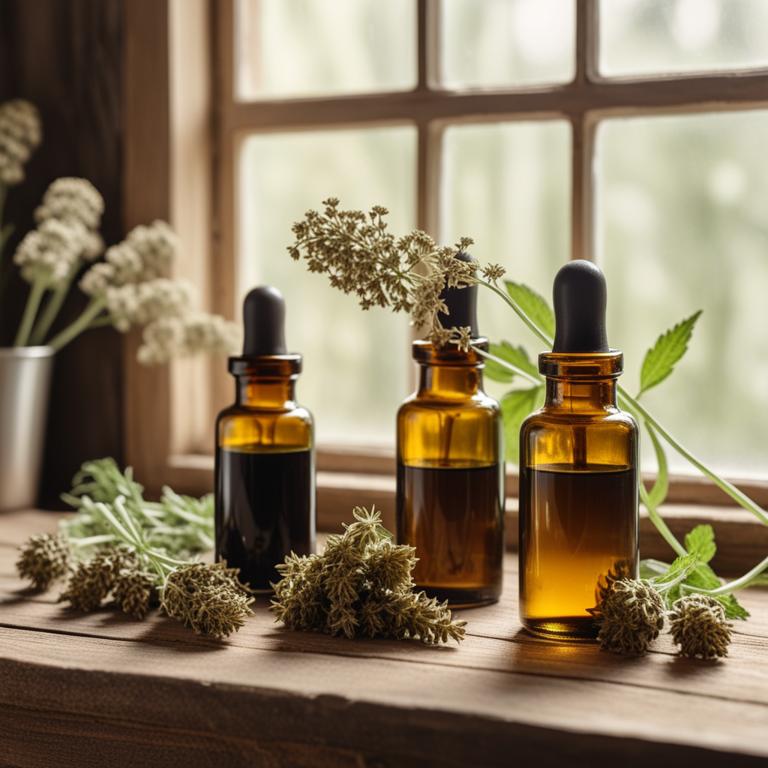
Valeriana officinalis tinctures have been traditionally used to treat lower back pain, a common ailment caused by muscle strain, degenerative disc disease, or other underlying conditions.
The sedative and analgesic properties of Valeriana officinalis tinctures help to reduce pain and inflammation in the lower back region, promoting relaxation and alleviating discomfort.
The bioactive constituents, including valerenic acid, valepotriates, and isovaltrate, contribute to the analgesic and anti-inflammatory effects of the tincture, helping to ease lower back pain.
By using Valeriana officinalis tinctures, individuals can benefit from reduced pain and inflammation, improved sleep quality, and enhanced overall well-being.
2. Urtica dioica tinctures
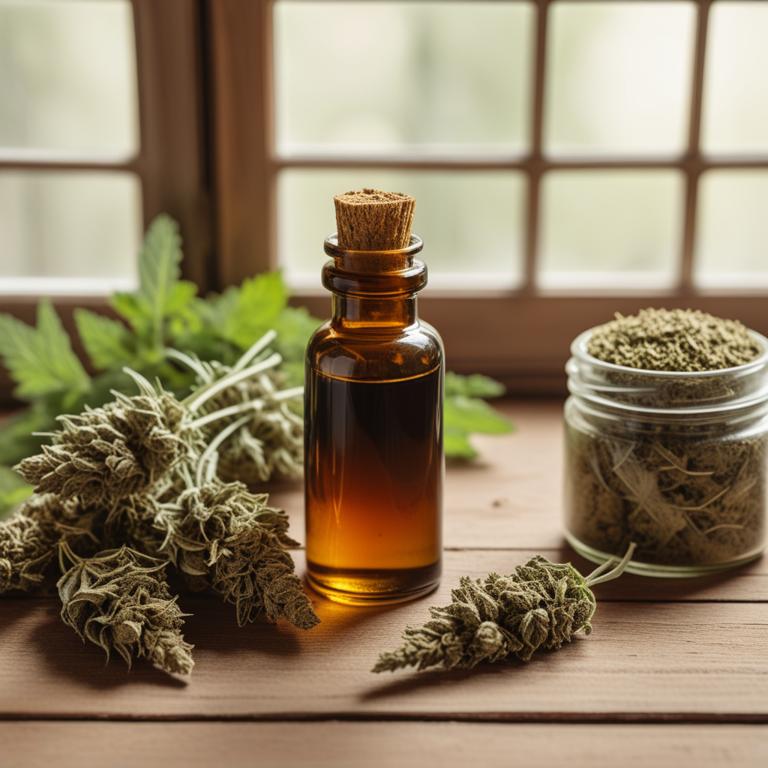
Urtica dioica tinctures have been traditionally used to treat lower back pain due to their anti-inflammatory and analgesic properties.
The herbal preparation contains bioactive constituents such as histamine, serotonin, and flavonoids, which help to reduce inflammation, relax muscles, and block pain signals, thereby alleviating lower back pain.
Urtica dioica tinctures work by inhibiting the production of pro-inflammatory enzymes, which contribute to pain and inflammation in the lower back, ultimately providing relief from discomfort and improving mobility.
The benefits of using Urtica dioica tinctures for lower back pain include reduced pain and inflammation, improved muscle relaxation, and enhanced overall well-being, making it a popular natural remedy for this common ailment.
3. Panax quinquefolius tinctures
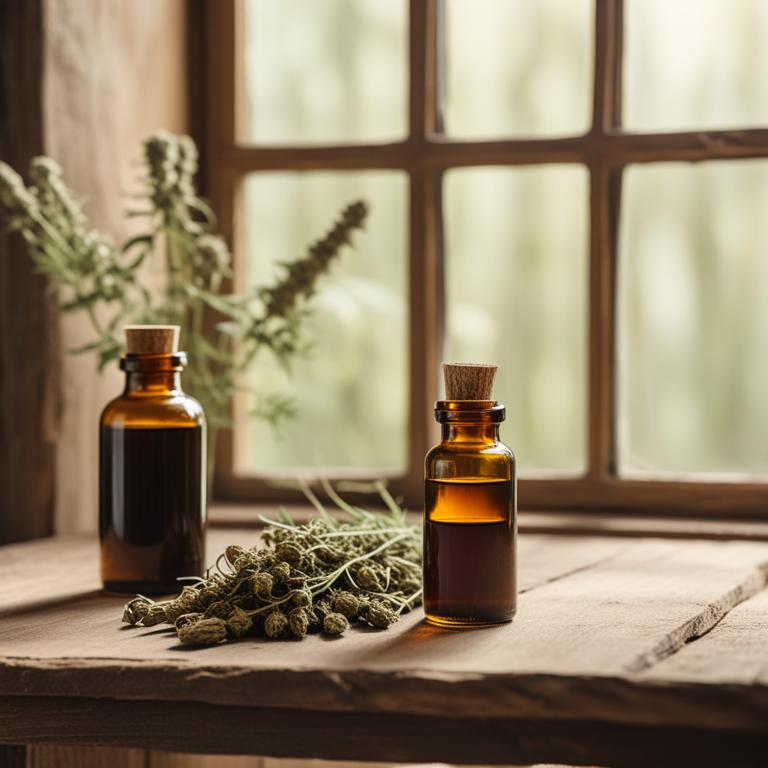
Panax quinquefolius tinctures have been traditionally used to treat lower back pain due to their anti-inflammatory and analgesic properties, which help to reduce muscle and joint pain.
The bioactive constituents, including ginsenosides, flavonoids, and phenolic acids, contribute to the tincture's therapeutic effects by modulating the body's response to pain and inflammation, thereby alleviating lower back pain.
By reducing muscle spasms, improving blood circulation, and promoting relaxation, Panax quinquefolius tinctures help to provide relief from lower back pain, making it a popular natural remedy for this common ailment.
The benefits of using Panax quinquefolius tinctures to treat lower back pain include reduced reliance on pharmaceuticals, minimal side effects, and a potential for long-term pain management.
Related Study
According to "The American journal of Chinese medicine", Panax quinquefolius tinctures may have analgesic effect and potentially be used to alleviate lower back pain, based on its demonstrated ability to reduce pain behavior in a chronic pain model.
4. Harpagophytum procumbens tinctures
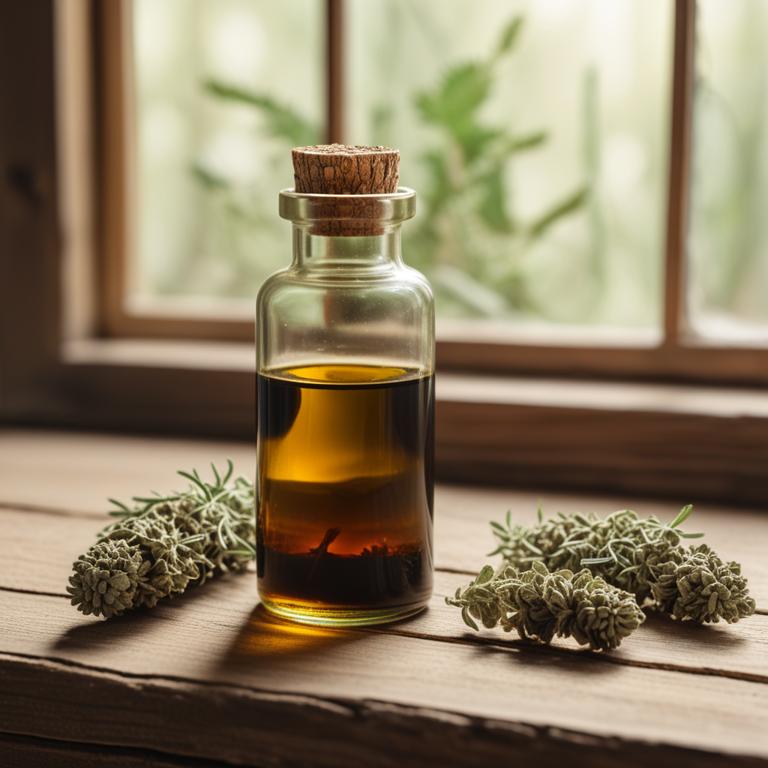
Harpagophytum procumbens tinctures, derived from the roots of the Devil's Claw plant, have been traditionally used to treat lower back pain due to its anti-inflammatory and analgesic properties.
The bioactive constituents, including harpagoside and iridoid glycosides, help to reduce inflammation and pain by inhibiting the production of pro-inflammatory enzymes and modulating the activity of neurotransmitters involved in pain perception.
By reducing inflammation and pain, Harpagophytum procumbens tinctures provide relief from lower back pain, allowing individuals to engage in daily activities with greater comfort and mobility.
The benefits of using Harpagophytum procumbens tinctures to treat lower back pain include improved quality of life, reduced reliance on pain medications, and a natural approach to managing chronic pain.
Related Study
According to "Spine", Harpagophytum procumbens tinctures for lower back pain showed strong evidence for short-term improvements in pain and rescue medication, particularly with daily doses standardized to 50 mg or 100 mg harpagoside.
5. Cannabis sativa tinctures
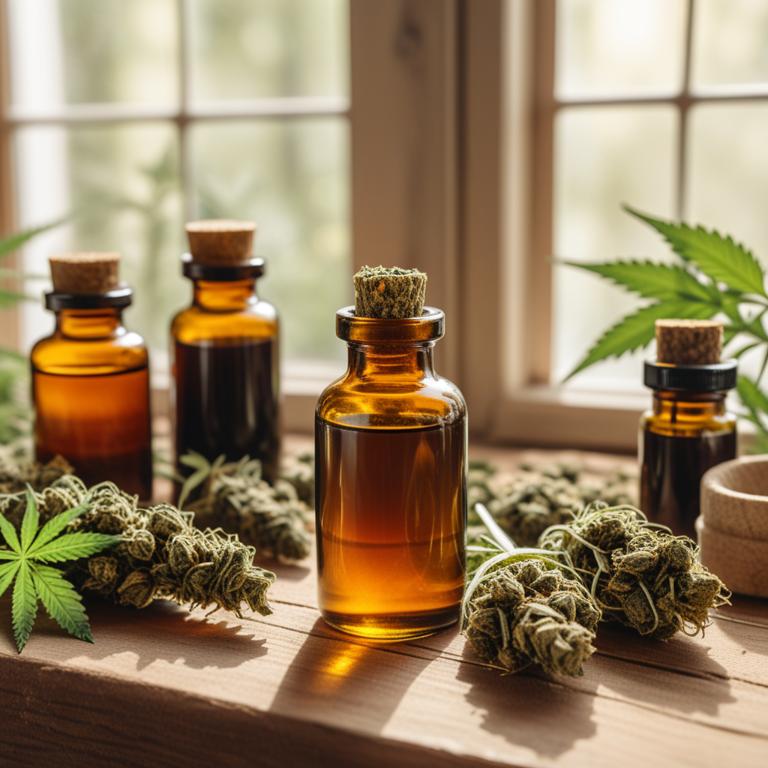
Cannabis sativa tinctures have been increasingly used to treat lower back pain due to their analgesic and anti-inflammatory properties, which help to alleviate discomfort and reduce inflammation in the affected area.
The bioactive constituents present in these tinctures, such as cannabinoids like THC and CBD, interact with the body's endocannabinoid system to produce pain-relieving and anti-inflammatory effects.
By modulating the body's pain response and reducing inflammation, Cannabis sativa tinctures can provide relief from lower back pain and improve overall quality of life.
The benefits of using these tinctures to treat lower back pain include reduced reliance on pharmaceuticals, fewer side effects, and a more natural approach to managing chronic pain.
Related Study
According to "International journal of molecular sciences", Cannabis sativa tinctures may provide relief from lower back pain due to their analgesic properties, which are part of the plant's diverse chemical composition offering potential therapeutic benefits.
6. Equisetum arvense tinctures
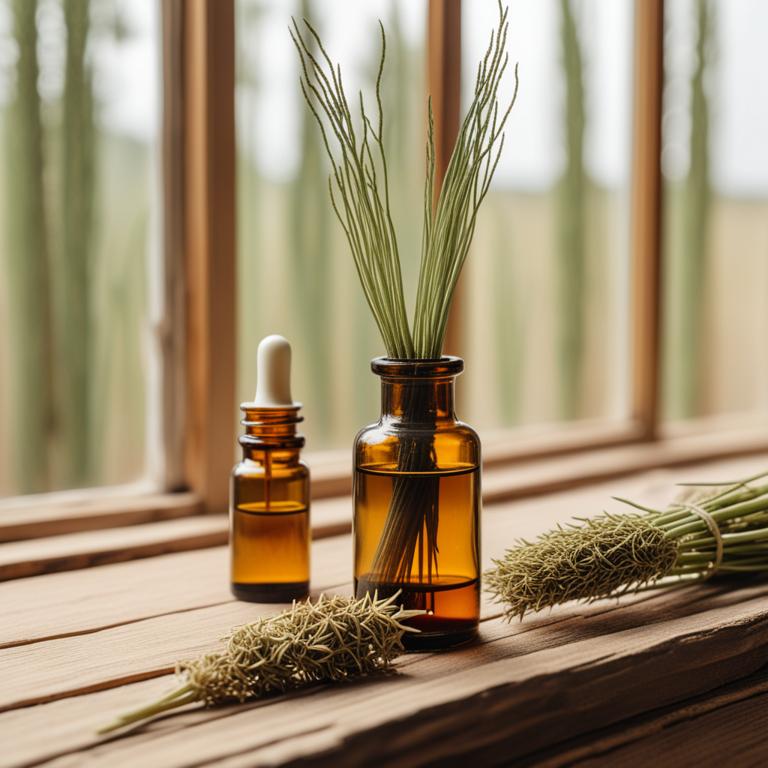
Equisetum arvense tinctures have been traditionally used to treat lower back pain due to their anti-inflammatory, analgesic, and anti-spasmodic properties.
The tincture helps to alleviate pain and discomfort by reducing inflammation and relaxing tense muscles in the lower back area.
The bioactive constituents, such as silicic acid and flavonoids, in Equisetum arvense tinctures contribute to its therapeutic effects by reducing oxidative stress and modulating the body's pain response.
The benefits of using Equisetum arvense tinctures to treat lower back pain include natural relief from pain and inflammation, improved mobility, and a reduction in the risk of chronic pain development.
7. Capsicum annuum tinctures

Capsicum annuum tinctures have been traditionally used to treat lower back pain due to their analgesic and anti-inflammatory properties, which help to reduce muscle spasms and inflammation in the affected area.
The bioactive constituents of Capsicum annuum tinctures, including capsaicin, have been found to inhibit the production of pain-causing chemicals, such as substance P, thereby providing relief from lower back pain.
Capsicum annuum tinctures work by stimulating the release of natural pain-relievers, called endorphins, which help to reduce pain perception and promote relaxation, thereby providing relief from lower back pain.
The benefits of using Capsicum annuum tinctures to treat lower back pain include reduced muscle spasms, improved range of motion, and enhanced overall well-being, making it a popular natural remedy for this common ailment.
8. Curcuma longa tinctures

Curcuma longa tinctures have been traditionally used to treat lower back pain due to their anti-inflammatory and analgesic properties, which help to reduce inflammation and alleviate pain in the affected area.
The bioactive constituents of Curcuma longa, including curcumin, demethoxycurcumin, and bisdemethoxycurcumin, play a crucial role in modulating the body's pain response and reducing oxidative stress.
By inhibiting the production of pro-inflammatory enzymes and cytokines, Curcuma longa tinctures help to reduce inflammation and promote healing in the lower back region.
The benefits of using Curcuma longa tinctures to treat lower back pain include reduced pain and inflammation, improved mobility, and a faster recovery time, making it a popular natural remedy for this common ailment.
9. Ginkgo biloba tinctures

Ginkgo biloba tinctures have been traditionally used to treat lower back pain due to their anti-inflammatory and antioxidant properties.
The flavonoids and terpenoids present in Ginkgo biloba, such as bilobalide and ginkgolides, help to reduce inflammation and improve blood circulation to the affected area, thereby alleviating pain and discomfort.
These bioactive constituents also have a neuroprotective effect, which may help to reduce nerve pain associated with lower back pain.
By using Ginkgo biloba tinctures, individuals may experience relief from lower back pain, improved mobility, and reduced reliance on pain medication.
Related Study
According to "Presse medicale (Paris, France : 1983)", Ginkgo biloba tinctures, specifically in the form of Ginkgo biloba extract, have shown significant pain relief and improved walking tolerance in patients with lower back pain after 6 months of treatment.